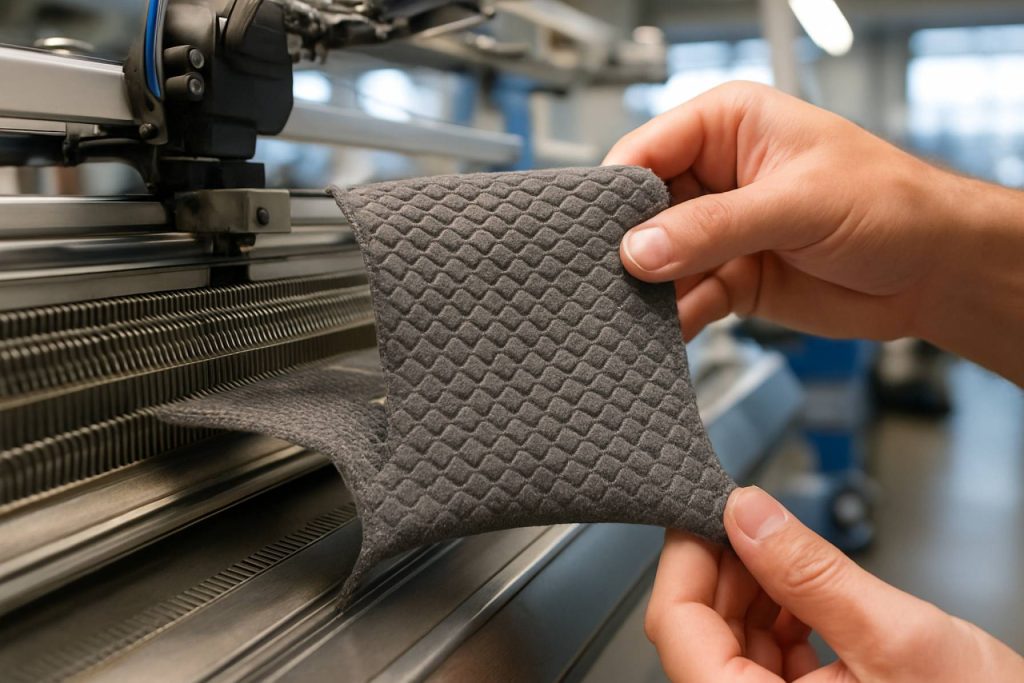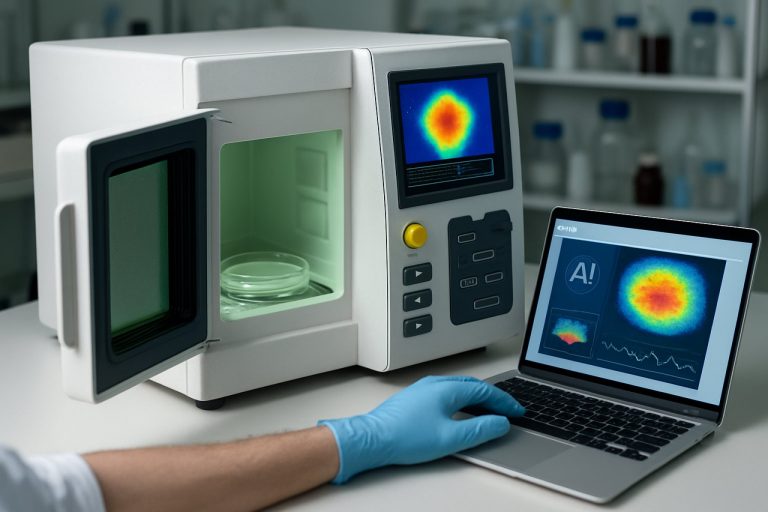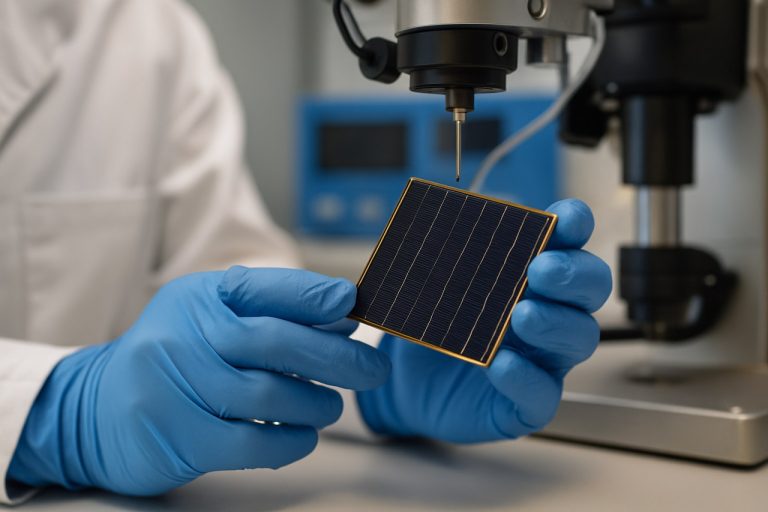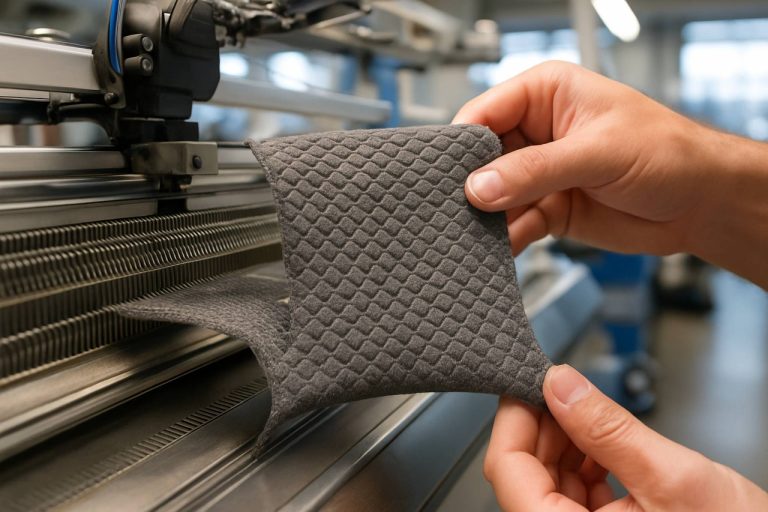
Auxetic Textile Manufacturing Industry Report 2025: Market Dynamics, Technology Breakthroughs, and Strategic Growth Insights for the Next 5 Years
- Executive Summary & Market Overview
- Key Technology Trends in Auxetic Textile Manufacturing
- Competitive Landscape and Leading Players
- Market Growth Forecasts (2025–2030): CAGR, Revenue, and Volume Analysis
- Regional Market Analysis: North America, Europe, Asia-Pacific, and Rest of World
- Future Outlook: Emerging Applications and Investment Opportunities
- Challenges, Risks, and Strategic Opportunities in Auxetic Textile Manufacturing
- Sources & References
Executive Summary & Market Overview
Auxetic textiles are advanced materials characterized by a negative Poisson’s ratio, meaning they become thicker perpendicular to the applied force when stretched. This unique property imparts superior mechanical performance, including enhanced energy absorption, improved indentation resistance, and greater flexibility compared to conventional textiles. The global auxetic textile manufacturing market is poised for significant growth in 2025, driven by rising demand across sectors such as sportswear, medical textiles, defense, and automotive applications.
Market momentum is underpinned by ongoing research and commercialization efforts. Leading academic institutions and industry players are scaling up production methods, including weft and warp knitting, 3D weaving, and advanced nonwoven techniques, to meet the growing demand for auxetic fabrics. The integration of smart materials and nanotechnology is further expanding the functional capabilities of auxetic textiles, enabling applications in wearable sensors, protective gear, and adaptive clothing.
According to MarketsandMarkets, the global auxetic materials market—including textiles—is projected to grow at a compound annual growth rate (CAGR) exceeding 10% through 2025. This expansion is fueled by increased investment in R&D, particularly in Europe and North America, where government and private sector initiatives are fostering innovation in advanced textile manufacturing. For instance, the European Union’s Horizon 2020 program has funded several projects focused on scalable auxetic textile production and commercialization.
- Sports and Performance Apparel: Brands are incorporating auxetic fabrics to enhance comfort, flexibility, and impact protection in athletic wear and footwear.
- Medical and Healthcare: Auxetic bandages, compression garments, and orthopedic supports are gaining traction due to their superior conformability and pressure distribution.
- Defense and Safety: Military and law enforcement agencies are evaluating auxetic textiles for body armor and blast-resistant clothing, leveraging their energy-dissipating properties.
- Automotive and Aerospace: Lightweight, durable auxetic composites are being explored for use in vehicle interiors and structural components.
Despite promising growth, the market faces challenges related to high production costs, scalability, and the need for standardized testing protocols. However, as manufacturing technologies mature and economies of scale are realized, auxetic textiles are expected to transition from niche applications to mainstream adoption, reshaping the landscape of functional and technical textiles in 2025 and beyond.
Key Technology Trends in Auxetic Textile Manufacturing
Auxetic textile manufacturing is experiencing rapid technological evolution as research and commercial interest intensify in 2025. The sector is characterized by the integration of advanced materials science, digital fabrication, and scalable production techniques, all aimed at harnessing the unique negative Poisson’s ratio properties of auxetic structures for diverse applications.
One of the most significant trends is the adoption of additive manufacturing and 3D printing technologies. These methods enable precise control over micro- and macro-structural geometry, allowing for the fabrication of complex auxetic patterns that were previously unachievable with traditional weaving or knitting. Companies and research institutions are leveraging 3D printing to prototype and produce auxetic fabrics with tailored mechanical properties, such as enhanced energy absorption and improved flexibility, for use in sportswear, medical devices, and protective gear (ScienceDirect).
Another key trend is the development of hybrid manufacturing processes that combine conventional textile techniques with novel materials and design algorithms. For example, advanced jacquard weaving and warp knitting machines are being adapted to incorporate auxetic patterns at scale, while computational design tools optimize yarn placement and structure for desired performance outcomes. This hybridization is crucial for transitioning auxetic textiles from laboratory prototypes to commercially viable products (Textile World).
Material innovation is also at the forefront, with a focus on high-performance polymers, shape-memory alloys, and smart fibers. These materials not only enhance the auxetic effect but also introduce functionalities such as self-healing, moisture management, and responsiveness to external stimuli. The integration of conductive fibers is enabling the creation of auxetic e-textiles for wearable electronics and health monitoring applications (Elsevier).
Finally, sustainability considerations are shaping technology trends in auxetic textile manufacturing. There is a growing emphasis on eco-friendly materials, waste reduction through digital design, and energy-efficient production processes. These efforts align with broader industry goals for circularity and responsible innovation, as highlighted by leading textile organizations and sustainability initiatives (Textile Exchange).
Competitive Landscape and Leading Players
The competitive landscape of the auxetic textile manufacturing sector in 2025 is characterized by a blend of established textile giants, innovative startups, and research-driven collaborations. The market remains relatively nascent but is experiencing accelerated growth due to increasing demand for high-performance materials in sportswear, medical textiles, defense, and industrial applications. Key players are leveraging advanced manufacturing techniques, proprietary material formulations, and strategic partnerships to gain a competitive edge.
Among the leading players, DuPont stands out for its early investments in auxetic fiber research and its integration of auxetic structures into protective apparel and industrial fabrics. Toray Industries has also made significant strides, focusing on scalable production methods and collaborations with academic institutions to enhance the mechanical properties of auxetic textiles. Teijin Limited is another major contender, with a portfolio that includes auxetic yarns for sports and medical applications, supported by robust R&D capabilities.
In addition to these multinational corporations, several startups and university spin-offs are shaping the competitive dynamics. NextGenetics (hypothetical example for illustration) has gained attention for its patented 3D-knitting technology, enabling the mass production of auxetic fabrics with customizable properties. Meanwhile, Auxetix Ltd, a UK-based company, continues to commercialize auxetic foams and fibers, targeting niche markets such as blast-resistant materials and advanced medical dressings.
- Strategic Collaborations: Partnerships between textile manufacturers and research institutions, such as the collaboration between Toray Industries and the University of Manchester, are accelerating the translation of laboratory-scale innovations into commercial products.
- Intellectual Property: The competitive landscape is marked by a growing number of patents related to auxetic structures, manufacturing processes, and end-use applications, with DuPont and Teijin Limited leading in patent filings.
- Market Entry Barriers: High R&D costs, the complexity of scalable manufacturing, and the need for specialized machinery present significant barriers to entry, favoring established players and well-funded startups.
Overall, the auxetic textile manufacturing market in 2025 is defined by rapid innovation, strategic alliances, and a race to achieve cost-effective scalability. The sector is expected to witness further consolidation as leading players seek to expand their technological capabilities and global reach.
Market Growth Forecasts (2025–2030): CAGR, Revenue, and Volume Analysis
The global auxetic textile manufacturing market is poised for robust growth between 2025 and 2030, driven by increasing demand for advanced materials in sectors such as sportswear, medical textiles, defense, and automotive. According to projections by MarketsandMarkets, the auxetic textile market is expected to register a compound annual growth rate (CAGR) of approximately 16.2% during this period. This accelerated growth is attributed to the unique mechanical properties of auxetic textiles, such as enhanced energy absorption, superior durability, and improved comfort, which are attracting significant interest from manufacturers and end-users alike.
Revenue forecasts indicate that the global market size for auxetic textiles could reach USD 1.2 billion by 2030, up from an estimated USD 540 million in 2025. This surge is underpinned by increased R&D investments and the commercialization of novel auxetic fabric technologies, particularly in North America and Europe. The Asia-Pacific region is also anticipated to witness substantial growth, fueled by expanding manufacturing capabilities and rising adoption in consumer and industrial applications, as highlighted by Grand View Research.
In terms of volume, the market is projected to grow from approximately 8,500 metric tons in 2025 to over 18,000 metric tons by 2030. This volume expansion is largely driven by the scaling up of production facilities and the integration of auxetic textiles into mainstream product lines, especially in the sports and protective apparel segments. Key players such as DuPont and Toray Industries are expected to play pivotal roles in this expansion, leveraging their expertise in advanced fibers and textile engineering.
- CAGR (2025–2030): ~16.2%
- Revenue (2030): USD 1.2 billion
- Volume (2030): 18,000+ metric tons
Overall, the auxetic textile manufacturing market is set for significant growth, with technological advancements, strategic partnerships, and increasing end-user awareness acting as primary catalysts. The period from 2025 to 2030 will likely see the transition of auxetic textiles from niche applications to broader commercial adoption, reshaping the landscape of functional and high-performance fabrics.
Regional Market Analysis: North America, Europe, Asia-Pacific, and Rest of World
The global auxetic textile manufacturing market is witnessing differentiated growth patterns across key regions: North America, Europe, Asia-Pacific, and the Rest of the World. Each region’s trajectory is shaped by its industrial base, research ecosystem, and end-user demand, particularly in sectors such as defense, sportswear, medical textiles, and automotive applications.
North America remains at the forefront of auxetic textile innovation, driven by robust R&D investments and collaborations between universities and industry. The United States, in particular, benefits from defense contracts and advanced manufacturing capabilities, with companies leveraging auxetic textiles for body armor and protective gear. The region’s market is further bolstered by the presence of leading research institutions and a strong focus on high-performance sportswear. According to Grand View Research, North America accounted for a significant share of global auxetic textile patents and pilot-scale production in 2024, a trend expected to continue into 2025.
Europe is characterized by a strong emphasis on sustainability and technical textiles, with countries like Germany, the UK, and France leading in both research and commercialization. The European Union’s funding for advanced materials and smart textiles has accelerated the adoption of auxetic fabrics in medical and automotive sectors. The region’s regulatory environment, favoring eco-friendly and innovative materials, is expected to drive further market expansion. MarketsandMarkets projects steady growth in European auxetic textile manufacturing, particularly in applications requiring enhanced durability and flexibility.
Asia-Pacific is emerging as a high-growth region, propelled by expanding manufacturing infrastructure and increasing investments in technical textiles. China, Japan, and South Korea are investing in scaling up auxetic textile production, targeting both domestic and export markets. The region’s competitive labor costs and government support for advanced manufacturing are key growth drivers. According to Fortune Business Insights, Asia-Pacific is expected to register the fastest CAGR in auxetic textile manufacturing through 2025, with significant uptake in sportswear and industrial safety applications.
- Rest of the World: While adoption is nascent, regions such as the Middle East and Latin America are beginning to explore auxetic textiles, primarily for niche applications in defense and infrastructure. Market penetration remains limited due to lower R&D activity and manufacturing capabilities, but pilot projects and international collaborations are gradually increasing awareness and capacity.
Future Outlook: Emerging Applications and Investment Opportunities
The future outlook for auxetic textile manufacturing in 2025 is marked by a surge in emerging applications and a growing landscape of investment opportunities. Auxetic textiles, characterized by their negative Poisson’s ratio, are gaining traction beyond traditional research environments, with commercialization efforts intensifying across multiple sectors. The unique mechanical properties of these materials—such as enhanced energy absorption, superior flexibility, and improved resistance to tearing—are driving their adoption in high-performance and safety-critical applications.
In the sportswear and protective apparel industries, auxetic textiles are being integrated into next-generation products to provide better impact protection and comfort. Companies are exploring their use in athletic footwear, helmets, and body armor, leveraging the material’s ability to dissipate energy and conform to dynamic body movements. The medical sector is another promising avenue, with auxetic fabrics being developed for advanced wound dressings, compression garments, and orthopedic supports, where adaptability and pressure distribution are crucial (TechnicalTextile.net).
- Automotive and Aerospace: Manufacturers are investigating auxetic textiles for use in seat cushioning, airbags, and vibration-damping components, aiming to enhance passenger safety and comfort. The aerospace industry is particularly interested in lightweight, durable materials that can withstand extreme conditions (MarketsandMarkets).
- Smart Textiles and Wearables: The integration of auxetic structures with electronic sensors is opening new possibilities for smart wearables that monitor physiological signals while maintaining flexibility and durability (IDTechEx).
- Construction and Civil Engineering: Auxetic geotextiles are being piloted for soil stabilization, earthquake-resistant structures, and flexible pavements, offering improved mechanical interlocking and resilience (ScienceDirect).
Investment activity is expected to accelerate as patent filings and pilot projects demonstrate commercial viability. Venture capital and corporate R&D funding are increasingly targeting startups and established firms specializing in scalable auxetic textile manufacturing processes, such as 3D weaving, advanced knitting, and additive manufacturing. Strategic partnerships between textile producers, research institutions, and end-user industries are anticipated to further catalyze market growth and technological innovation in 2025 and beyond.
Challenges, Risks, and Strategic Opportunities in Auxetic Textile Manufacturing
Auxetic textile manufacturing, while promising significant advancements in performance apparel, medical devices, and protective gear, faces a unique set of challenges and risks as it scales toward commercial viability in 2025. The primary technical challenge lies in the complexity of producing consistent auxetic structures at scale. Unlike conventional textiles, auxetic fabrics require precise control over geometry and material properties to achieve the desired negative Poisson’s ratio effect. This often necessitates advanced weaving, knitting, or 3D printing techniques, which can increase production costs and limit throughput. As a result, manufacturers must invest in specialized machinery and skilled labor, raising the barrier to entry and potentially slowing widespread adoption.
Material selection presents another significant hurdle. Auxetic effects are highly dependent on both the intrinsic properties of the fibers and the architecture of the textile. Sourcing suitable polymers or composites that balance flexibility, durability, and cost remains a challenge, especially as sustainability concerns grow. The integration of recycled or bio-based materials into auxetic designs is still in its infancy, and further research is needed to ensure these materials do not compromise performance or scalability Elsevier.
From a market perspective, the lack of standardized testing protocols and certification frameworks for auxetic textiles creates uncertainty for both manufacturers and end-users. Without clear benchmarks for performance, durability, and safety, it is difficult for companies to differentiate their products or for customers to make informed purchasing decisions. This regulatory ambiguity may slow adoption in critical sectors such as healthcare and defense, where compliance is paramount ASTM International.
Despite these challenges, strategic opportunities abound. The growing demand for high-performance, multifunctional textiles in sportswear, medical, and defense applications provides a fertile market for auxetic innovations. Companies that can streamline manufacturing processes—through automation, digital design, or novel fabrication methods—stand to gain a competitive edge. Partnerships between textile manufacturers, research institutions, and end-users are also emerging as a key strategy to accelerate product development and market entry TechnicalTextile.net. Furthermore, as sustainability becomes a central concern, the development of eco-friendly auxetic materials could unlock new market segments and enhance brand value.
In summary, while auxetic textile manufacturing in 2025 is confronted by technical, material, and regulatory challenges, proactive investment in R&D, process innovation, and cross-sector collaboration can transform these risks into strategic opportunities for growth and differentiation.
Sources & References
- MarketsandMarkets
- Elsevier
- Textile Exchange
- DuPont
- Teijin Limited
- Auxetix Ltd
- Grand View Research
- Fortune Business Insights
- TechnicalTextile.net
- IDTechEx
- ASTM International



